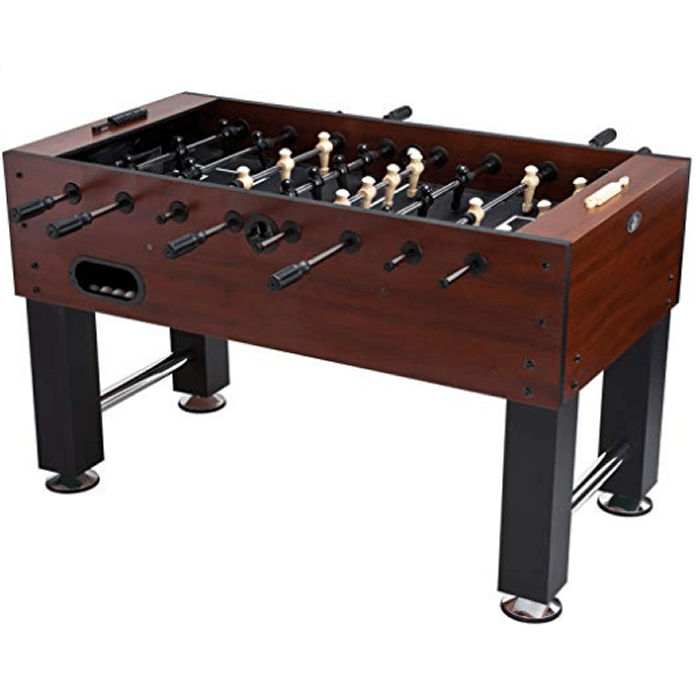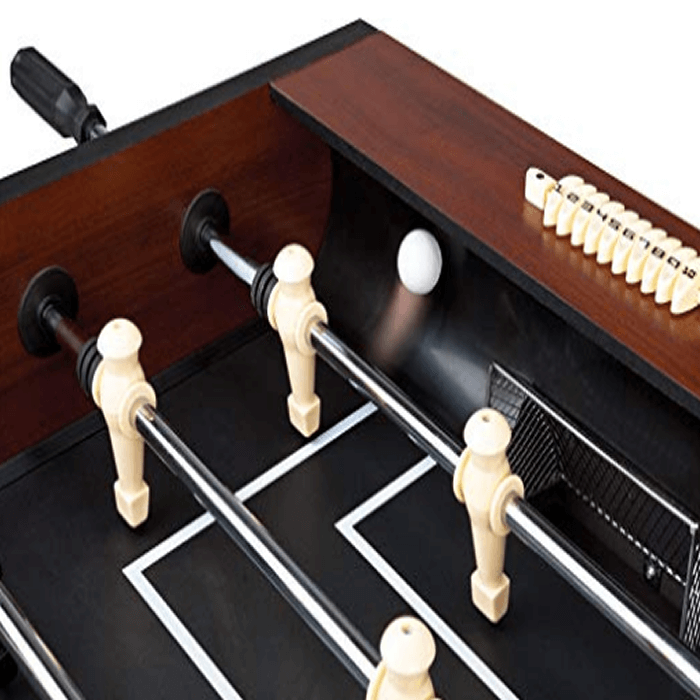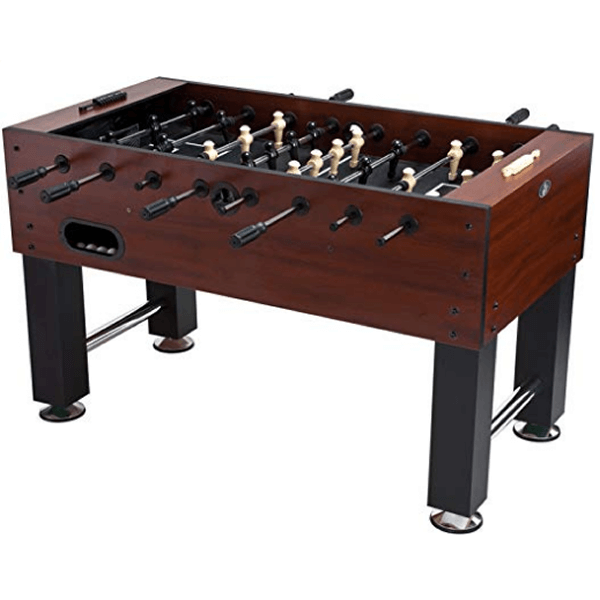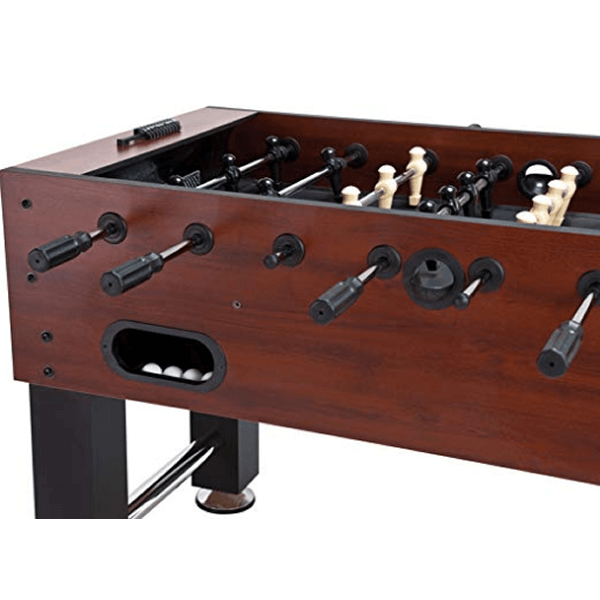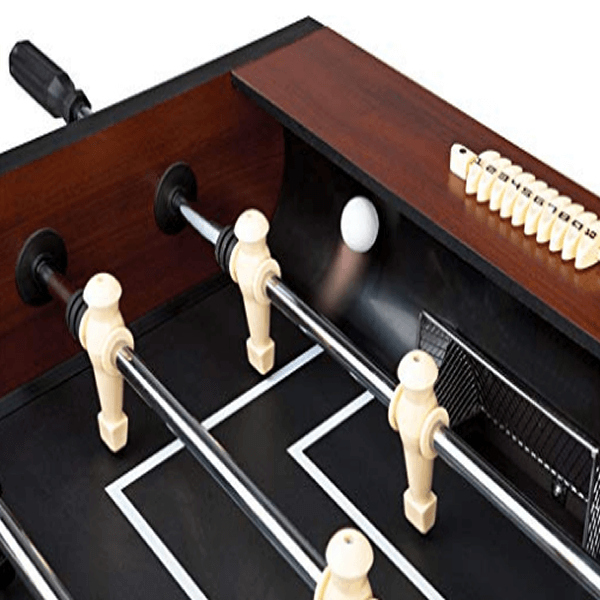Durability
MDF is the material used on all mid-level tables. It’s not highest quality, but it’s also what makes the table affordable. MDF is more susceptible to damage and moisture, though it doesn’t contract and expand the way real wood does either. My concern with this table is that it’s only 1/2″ thick, half of the DMI FT250DS, which costs less than $100 more.
The table weighs over 130 pounds and has 4-1/2″ legs, so it’s built pretty solid. The hollow steel rods are built to last. There are some plastic pieces that could break, such as the score pieces.
Gameplay
What makes gameplay fun? For starters, it’s stability. A table that moves easily can give one side an advantage over the other at a given time. Any table over 120 pounds has enough weight to hold steady even when players are aggressive.
The leg levelers create a level surface, whether the floor is even or not. This matters a lot, as an uneven surface will result in dead spots and perhaps a competitive advantage for one side.
Hollow, steel rods are high quality and create faster play. This is what you want if you’re an experienced player.
A unique feature is the wave design on each end, which continuously keeps the ball in play. The downside is that the ball could roll right off the table if hit hard enough. However, you can replace them with blocking plates if you don’t want this feature.
While not a huge deal, the ball can be retrieved on each side for convenience. The Carrom Burr Oak, a more expensive model, only has openings on the ends.
It doesn’t come with counterbalanced players, which some mid-level tables have. Counterbalanced players stay horizontal to the surface until they are moved. The advantage with this feature is being able to have space to shoot the ball, so your own guys don’t block it. The Hathaway Primo does have the feature and costs $100 more.
It’s almost a full-sized table, which creates more fun for everyone who plays.
Aesthetics
The black and ivory robo-style players and the wood finish give the table a sophisticated appearance. The table looks heavy and more expensive than it really is. The only downside is the surface would look better green than it does black in my opinion. Green is more traditional, plus it would provide some more contrast with the black players. Overall, it’s an attractive table that would fit well in any game room.
Who's It For?
I would buy this table for teenagers, beginner/intermediate players, and casual play. It's a fairly heavy table, and the hollow rods allow for faster play, but the quality of the materials in questionable. It may not hold up long-term under vigorous use. The continuous play feature is great for beginners, and the level surface is ideal for everyone. This is a quality table for beginners, but probably a cheaper table for intermediate players.

